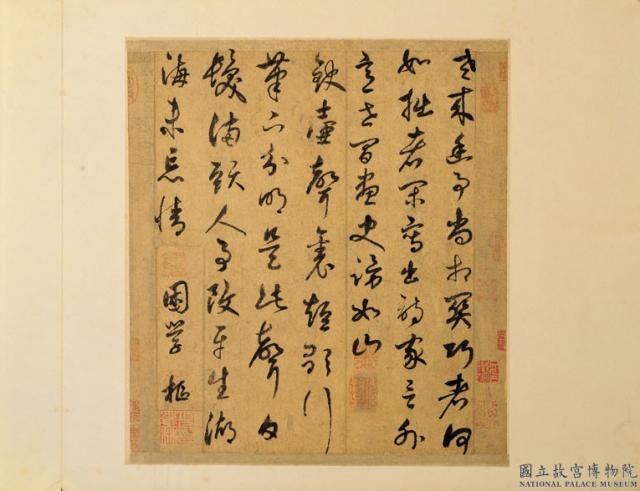元人詩翰 冊 元鮮于樞書七言絕句二首
推薦分享
資源連結
連結到原始資料 (您即將開啟新視窗離開本站)後設資料
- 資料識別:
- 故書000258N000000006
- 資料類型:
- 類型:書法
- 型式:文字
- 著作者:
- 鮮于樞
- 出版者:
- 數位化執行單位:國立故宮博物院
- 格式:
- 本幅 30.6x27.9公分、全幅 36.8x86.5公分
- 語言:
- 漢文
- 關聯:
- 石渠寶笈三編(延春閣),第六冊,頁2560-2564&*故宮書畫錄(卷三),第一冊,頁254-259&*鮮于樞(西元一二五七-一三○二年),字伯機,號困學民,漁陽(今屬北京)人。善詞賦通音律,能鑑定書畫及古器。至元間官浙江行省都事,大德六年任太常典簿,是年卒。 行楷得晉唐雄勁筆意,草書學懷素。趙孟頫曾謂:「伯機草書過余遠甚,極力追之而不能及。」筆勢豪邁圓勁,使轉縱橫,落筆不茍,有北方人雄強的氣魄。本幅選自「元人詩翰」冊第六幅。 &*Hsien-yu Shu (style name Po-chi; sobriquets K'un-hsueh-min, Chih-ch'i lao-jen, and Hu-lin yin-shih) was a native of Yu-yang, Hopeh. He excelled at the connoiseurship of calligraphy, psinting, and antiquities. He had a grand manner and was erudite and talented, excelling at both painting and calligraphy. Hsien-yu Shu's running and standard scripts fully acquired the grand manner of the styles by Chin (319-420) and T'ang (618-907) period calligraphers. For cursive script, he studied the style of the monk Huai-su (ca. 735-800?). Hsien-yu Shu practiced their styles diligently and was completely immersed in them. This particular scroll contains two seven-character quatrains rendered in brushwork that is forceful yet moves effortlessly across the paper. The brushwork has been properly executed down to every stroke and dot so that they all strike perfect poses.
- 管理權:
- 國立故宮博物院
授權聯絡窗口
- 國立故宮博物院圖像授權、出版授權、影音資料授權-申請流程說明
http://www.npm.gov.tw/zh-TW/Article.aspx?sNo=03003061






